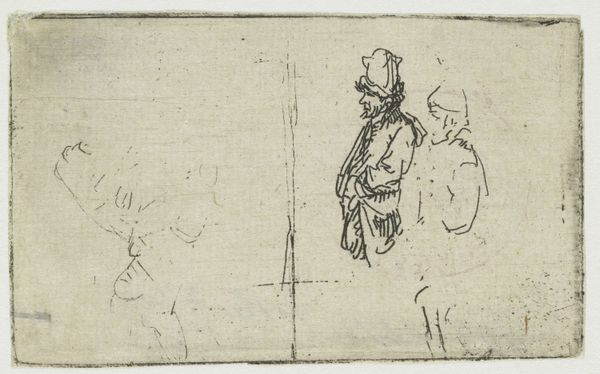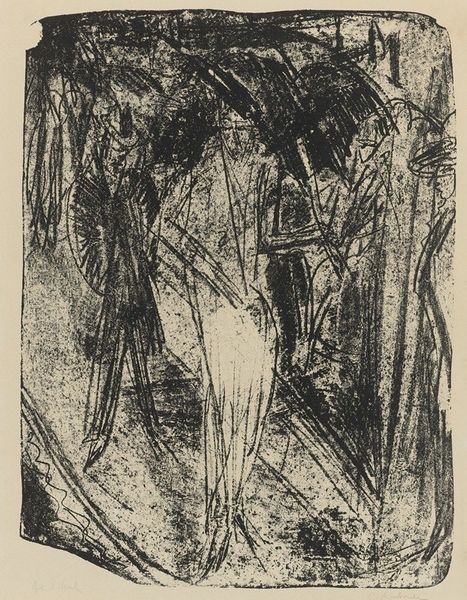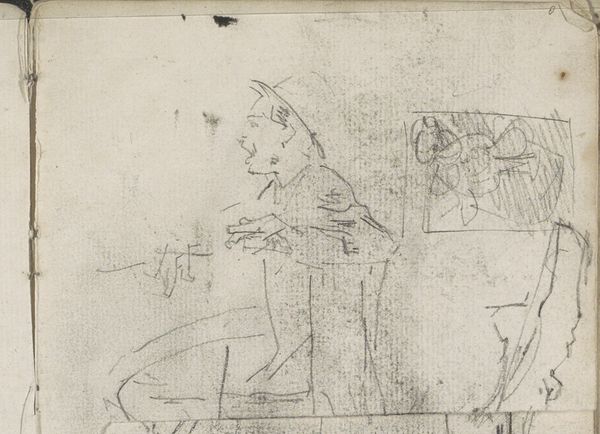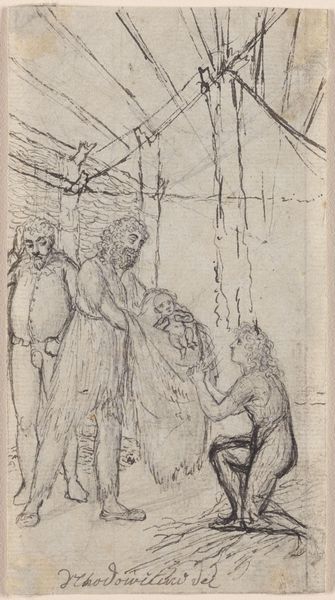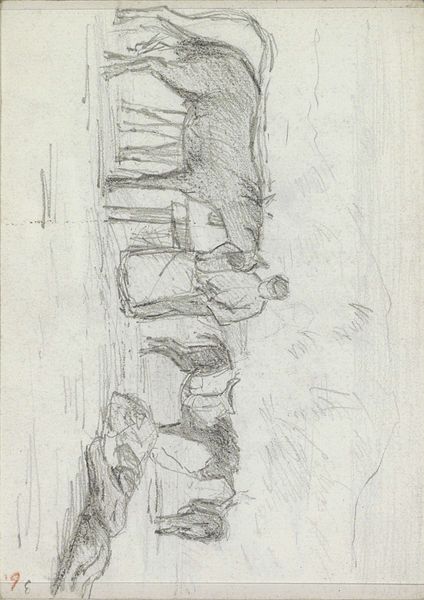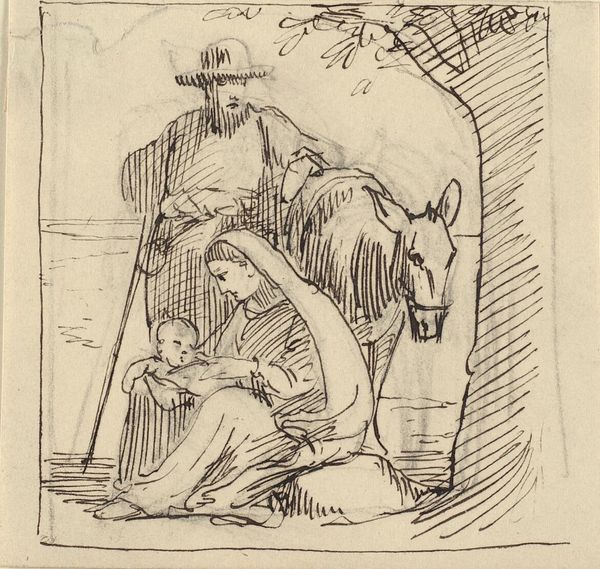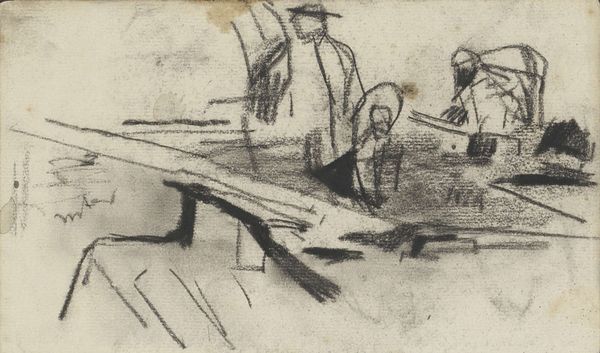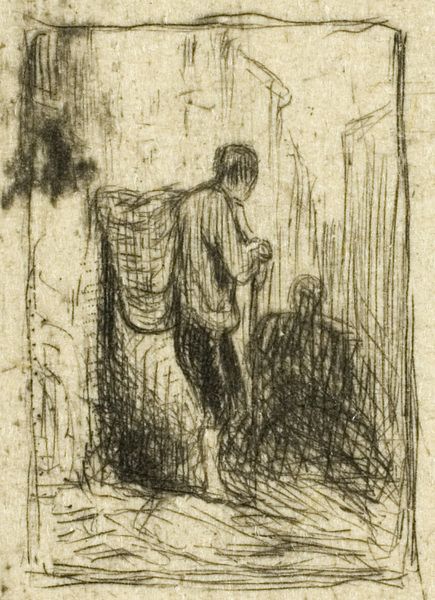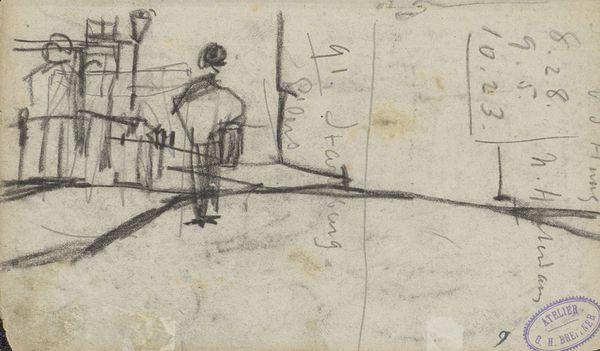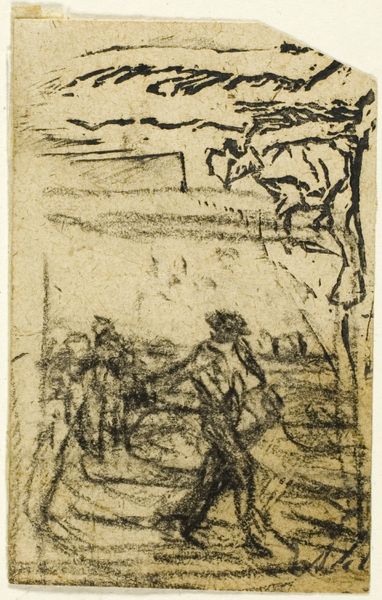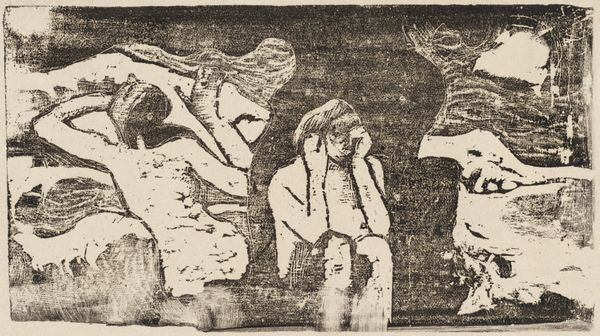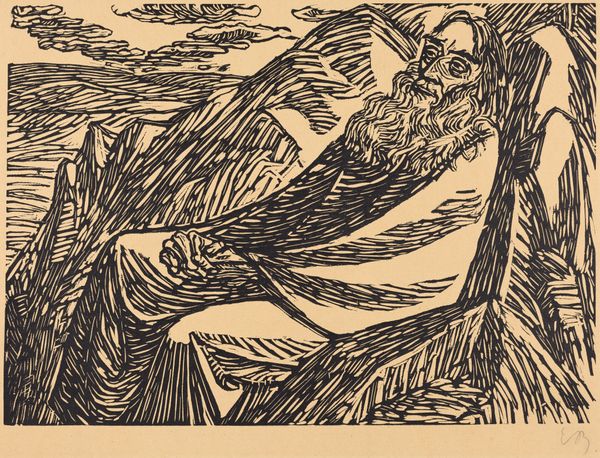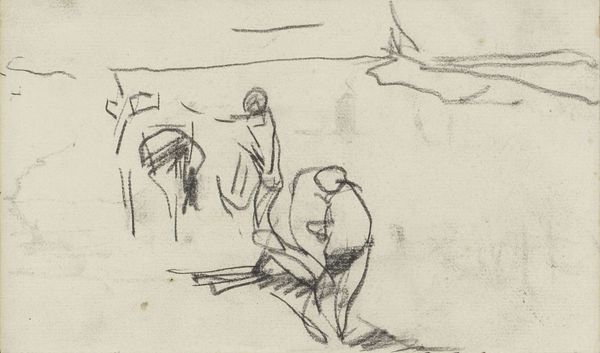
drawing, charcoal
#
drawing
#
pen sketch
#
pencil sketch
#
landscape
#
ink drawing experimentation
#
abstraction
#
sketchbook drawing
#
genre-painting
#
charcoal
#
post-impressionism
Copyright: Public domain
Vincent van Gogh made this pencil drawing, Two Women Working in Wheat Field, at an unknown date. Van Gogh was deeply interested in the lives of rural laborers. This image reflects a broader 19th-century artistic preoccupation with the working class, particularly in agricultural settings. The Netherlands, where Van Gogh was born, had a complex social structure, with clear divisions between landowners and the working class. The drawing is simple, yet it conveys the labor and toil of the women. Notice that the artist used quick, gestural lines to depict the wheat field, and the women's postures suggest hard work. Van Gogh's choice of subject matter reflects his sympathy for the working class and his desire to depict their lives with honesty. To understand Van Gogh's intentions, it is helpful to look at his letters and other writings, and to study the social and economic conditions of the Netherlands at the time. Art is always contingent on social and institutional context.
Comments
No comments
Be the first to comment and join the conversation on the ultimate creative platform.

